When other seeds germinate, the seedlings struggle to emerge into the sunlight, so they can photosynthesise and make their own nutrition. When a squawroot seed germinates, it squirms farther underground in search of its nourishment. It “feels around” in the dark until it finds the root of an oak or beech tree and latches on for dear life. For the rest of its life it will feed parasitically off these tree roots. The oak roots develop little, knobby protuberances where the squawroot has latched on, but other than that the oak trees don’t appear to suffer any ill-health as the result of their parasites.
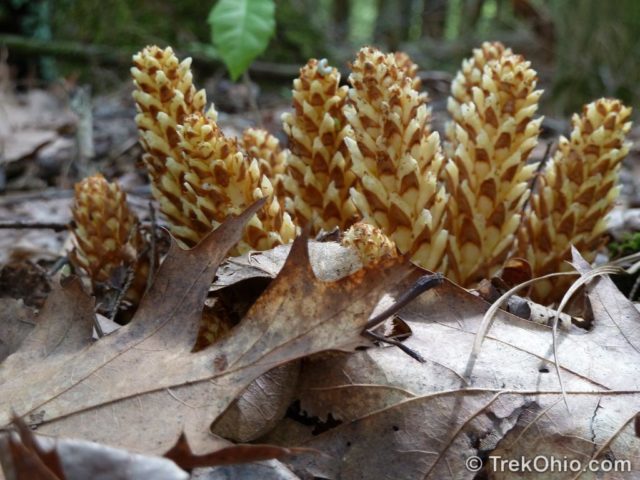
Despite living such an atypical life, as a member of the plant kingdom squawroot still retains a plant’s basic reproductive cycle, and this is the only part of its life that occurs above ground. A flower stalk (or inflorescence) rises up above the surface. There is a colony of ten such flowering stalks in the above photo (each flowering stalk resembles a pine cone). Although the flowers have no scent that’s detectable by people, the flower still manages to draw pollinators, such as bees, to it.
One of the reasons that I liked the topmost photo is because the emerging flower stalks are clearly surrounded by the fallen leaves of their host, an oak tree. Also on the top photo you can see little brown scales under each flower. I believe the purpose of these scales are to protect the flower buds as the flower stalk pushes its way above ground. Most of these brown scales eventually fall off leaving an entirely whitish stalk and flowers.
The top photo was taken this year near the end of April. The photo below was taken in a previous year near the end of May. In the photo below the leftmost flowering stalk has dropped most of its scales. You’ll note that the two flowering stalks to the right have whitish flowers on top, but their lower flowers are already turning brown. The brown flowers have already been fertilized.
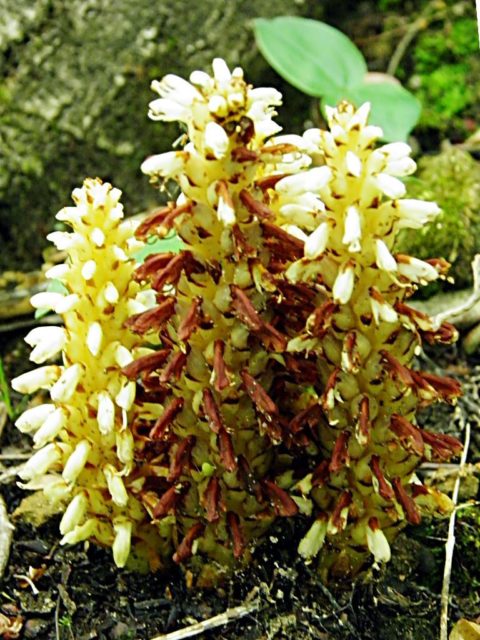
Here’s a closer look at some of the flowers. Although it’s a bit difficult to make out, it seems that two stamen emerge per flower.
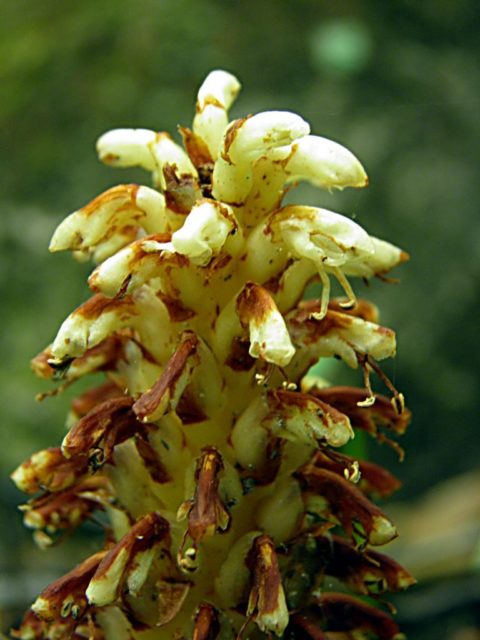
After the fertilized flowers darken and wither, they are replaced by the plant’s fruit. The squawroot’s fruit consists of white seed capsules. Here’s a photo that I took in July of a previous year that displays the seed capsules
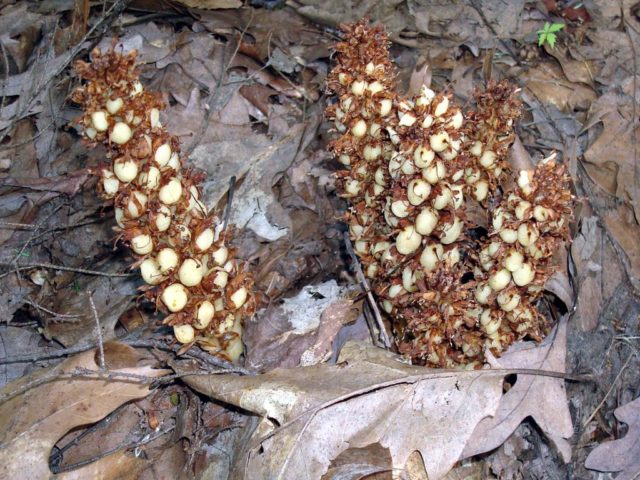
Once the seeds make it to the ground, the seedlings tunnel deeper till they find roots, and the cycle begins again.
By the way, when I first came across this plant, I thought I had discovered some sort of freaky fungus. ![]()
Update: According to Woodland Wildflowers of Illinois, each flower has four stamen.
More on Plants without Chlorophyll
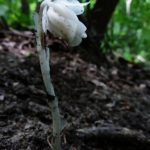
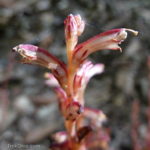
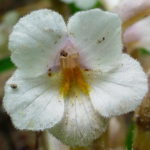
they say it is edible and good for the digestive system? Is there a certain time when it is edible?
Wonderful information and excellent shots. I love learning new, cool stuff. Thanks for sharing! Tom
Your welcome, Tom. I’ve been reading your account of your birding trip to Ohio with great interest. I’m pretty much a novice bird watcher, and I hope to become better at spotting birds.
Fascinating post; thank you!
Your welcome, Neita. 🙂
Does it grow better under certain conditions, like dry or wet, warm or cold? I’ve never seen it before this year and now I am seeing a lot. Last weekend we took a trail and in one area the whole forest floor was full of squaw root!
Sally, according to Woodland Wildflowers of Illinois, squawroot requires “well-drained site where the soil is not too compacted.” We have had an unusually warm and early spring this year, but I haven’t been able to find anything about how this might cause the plant to flourish.
As to a whole forest floor full of squawroot, wow!